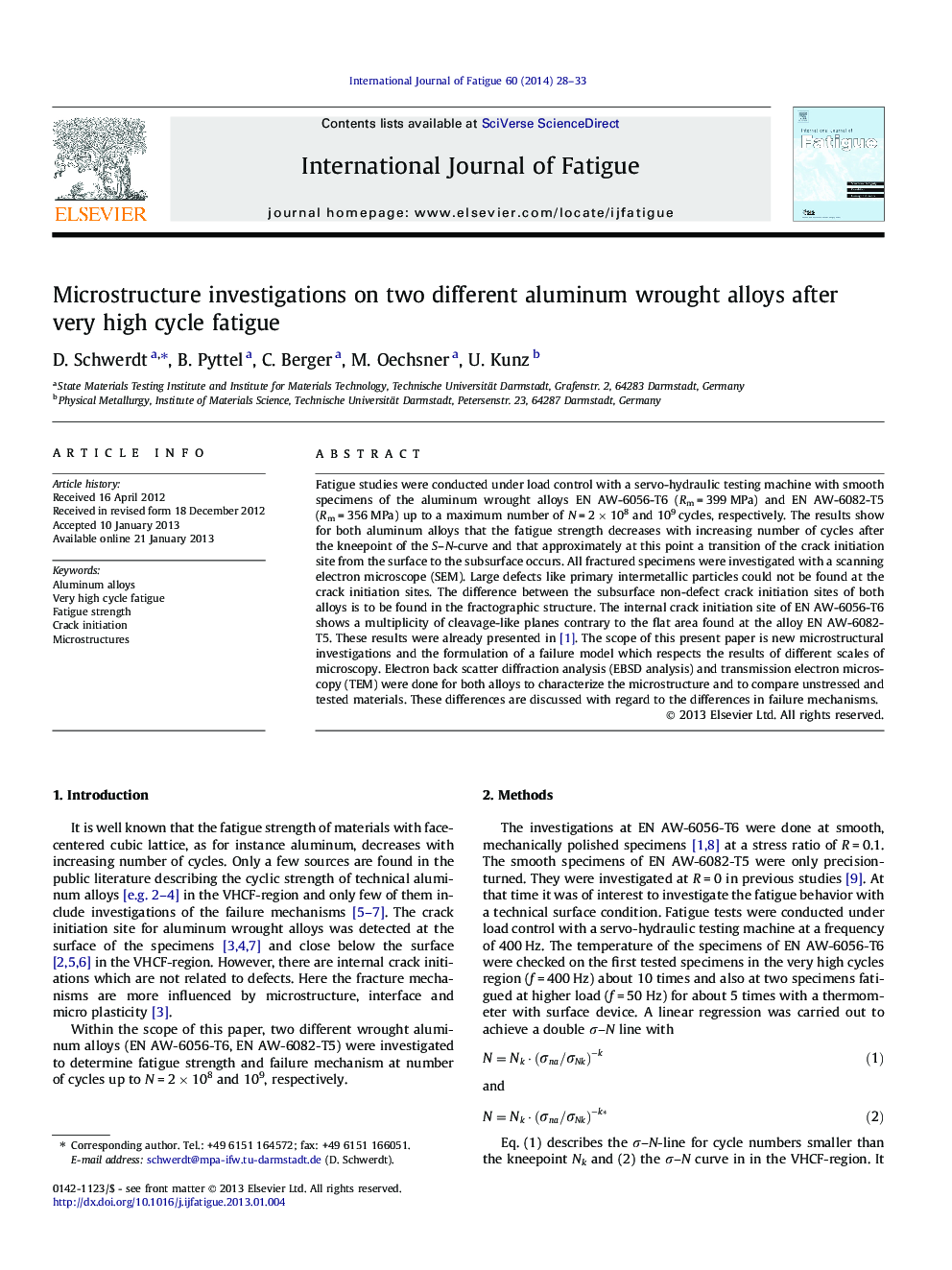| Article ID | Journal | Published Year | Pages | File Type |
|---|---|---|---|---|
| 780722 | International Journal of Fatigue | 2014 | 6 Pages |
Fatigue studies were conducted under load control with a servo-hydraulic testing machine with smooth specimens of the aluminum wrought alloys EN AW-6056-T6 (Rm = 399 MPa) and EN AW-6082-T5 (Rm = 356 MPa) up to a maximum number of N = 2 × 108 and 109 cycles, respectively. The results show for both aluminum alloys that the fatigue strength decreases with increasing number of cycles after the kneepoint of the S–N-curve and that approximately at this point a transition of the crack initiation site from the surface to the subsurface occurs. All fractured specimens were investigated with a scanning electron microscope (SEM). Large defects like primary intermetallic particles could not be found at the crack initiation sites. The difference between the subsurface non-defect crack initiation sites of both alloys is to be found in the fractographic structure. The internal crack initiation site of EN AW-6056-T6 shows a multiplicity of cleavage-like planes contrary to the flat area found at the alloy EN AW-6082-T5. These results were already presented in [1]. The scope of this present paper is new microstructural investigations and the formulation of a failure model which respects the results of different scales of microscopy. Electron back scatter diffraction analysis (EBSD analysis) and transmission electron microscopy (TEM) were done for both alloys to characterize the microstructure and to compare unstressed and tested materials. These differences are discussed with regard to the differences in failure mechanisms.
